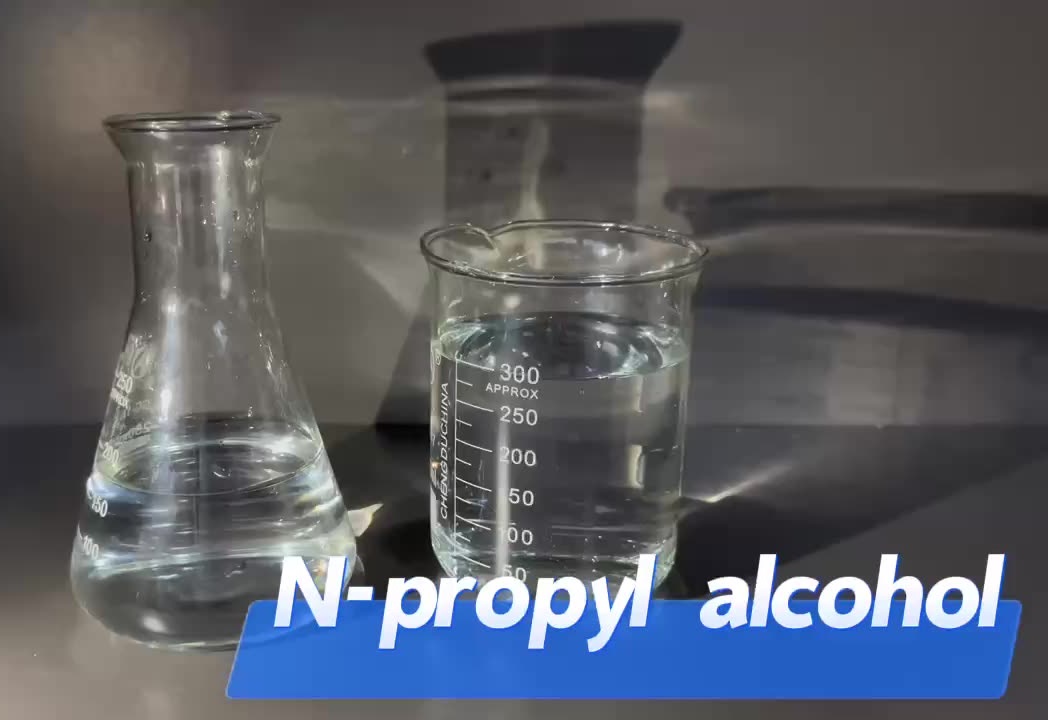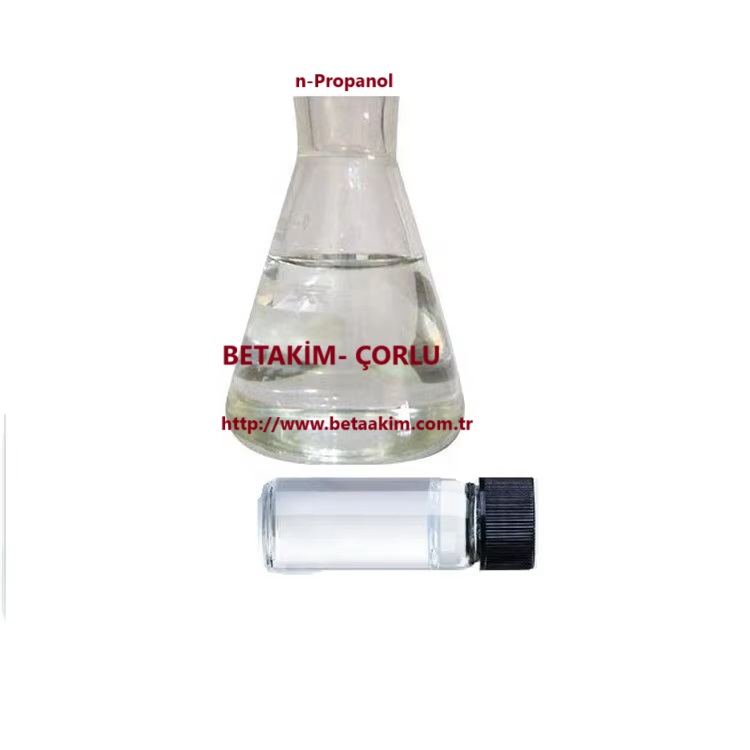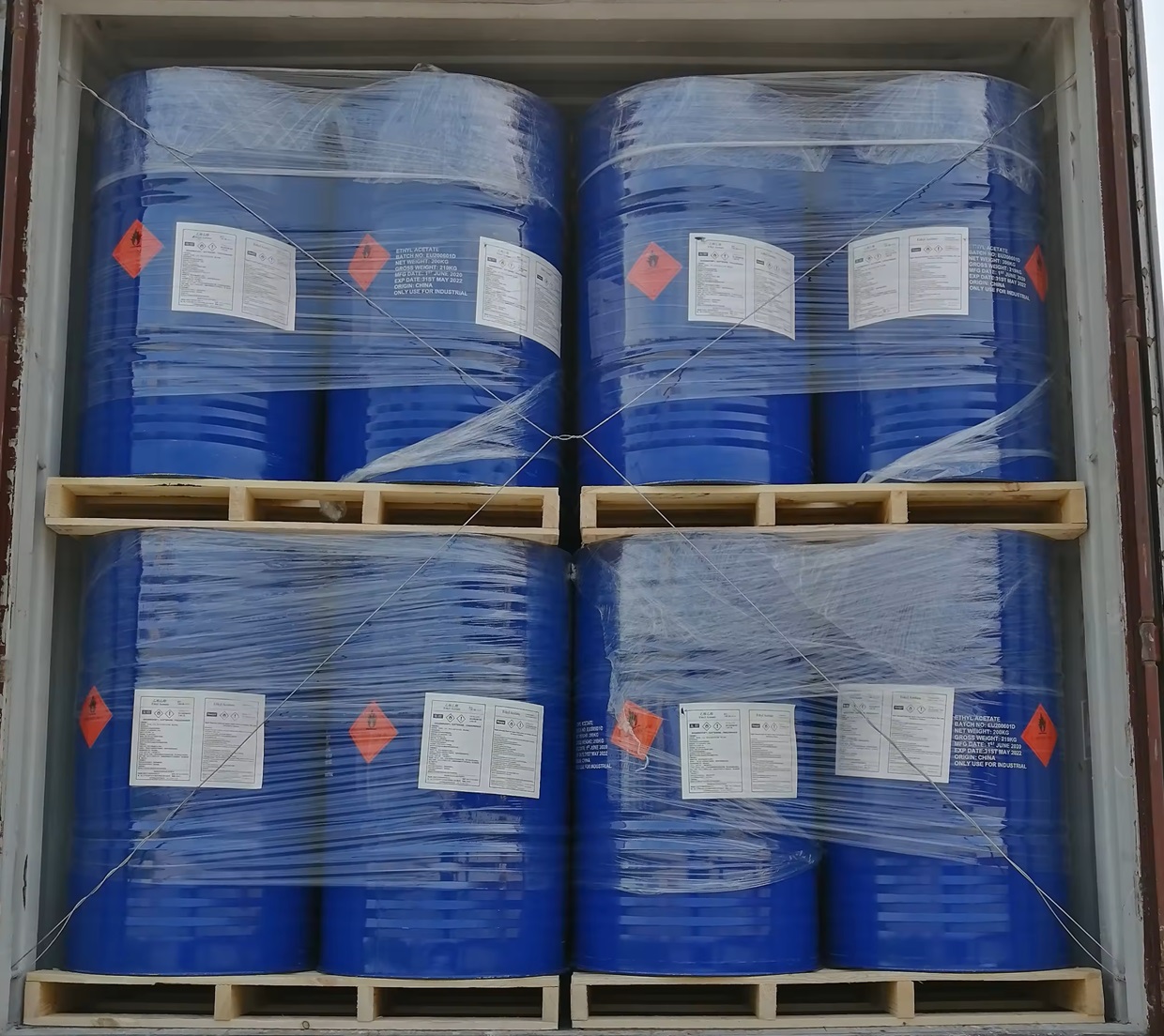We unleash your business potential by maximize the business innovation.
Send Email1-Propanol, 71-23-8 , Propanol, n-Propanol, Propyl Alcohol
CAS: 71-23-8
Molecular Formula: C3H8O
Names and Identifiers
| Name | 1-Propanol |
| Synonyms | n-C3H7OH Propanol 1-Propanol n-Propanol Propan-1-ol Propyl Alcohol femanumber2928 ethyl carbinol alcoolpropilico n-propyl alcohol n-ppropylalcohol alcoolpropylique Natural Propyl Alcohol alcoolpropylique(french) epapesticidechemicalcode047502 |
| CAS | 71-23-8 |
| EINECS | 200-746-9 |
| InChI | InChI=1/C3H8O/c1-2-3-4/h4H,2-3H2,1H3 |
Physico-chemical Properties
| Molecular Formula | C3H8O |
| Molar Mass | 60.1 |
| Density | 0.804 g/mL at 25 °C(lit.) |
| Melting Point | -127°C(lit.) |
| Boling Point | 97°C(lit.) |
| Flash Point | 59°F |
| JECFA Number | 82 |
| Water Solubility | soluble |
| Solubility | H2O: passes test |
| Vapor Presure | 10 mm Hg ( 147 °C) |
| Vapor Density | 2.1 (vs air) |
| Appearance | Liquid |
| Color | <10(APHA) |
| Odor | Resembles that of ethyl alcohol. |
| Exposure Limit | TLV-TWA (200 ppm); (500 mg/m3); STEL250 ppm (625 mg/m3); IDLH 4000 ppm. |
| Maximum wavelength(λmax) | ['λ: 220 nm Amax: ≤0.40', , 'λ: 240 nm Amax: ≤0.071', , 'λ: 275 nm Amax: ≤0.0044'] |
| Merck | 14,7842 |
| BRN | 1098242 |
| pKa | >14 (Schwarzenbach et al., 1993) |
| PH | 7 (200g/l, H2O, 20℃) |
| Storage Condition | Store at +5°C to +30°C. |
| Stability | Stable. May form peroxides in contact with air. Incompatible with alkali metals, alkaline earths, aluminium, oxidizing agents, nitro compounds. Highly flammable. Vapour/air mixtures explosive. |
| Explosive Limit | 2.1-19.2%(V) |
| Refractive Index | n20/D 1.384(lit.) |
| Physical and Chemical Properties | Colorless transparent liquid. Has an ethanol-like odor. A small amount is present in the fusel oil. Density 0.8036. Refractive index 1.3862. Melting Point -127 °c. Boiling point 97.19 °c. Soluble in water, ethanol and ether. The vapor forms an explosive mixture with air, with an explosion limit of 2.5% to 8.7% by volume. |
| Use | Used as a solvent, in many cases can replace the lower boiling point of ethanol. |
Risk and Safety
| Risk Codes | R11 - Highly Flammable R41 - Risk of serious damage to eyes R67 - Vapors may cause drowsiness and dizziness |
| Safety Description | S7 - Keep container tightly closed. S16 - Keep away from sources of ignition. S24 - Avoid contact with skin. S26 - In case of contact with eyes, rinse immediately with plenty of water and seek medical advice. S39 - Wear eye / face protection. |
| UN IDs | UN 1274 3/PG 2 |
| WGK Germany | 1 |
| RTECS | UH8225000 |
| FLUKA BRAND F CODES | 10-23 |
| TSCA | Yes |
| HS Code | 29051200 |
| Hazard Class | 3 |
| Packing Group | II |
| Toxicity | LD50 orally in rats: 1.87 g/kg (Smyth) |
Upstream Downstream Industry
| Raw Materials | Propionaldehyde |
| Downstream Products | Propyl 4-hydroxybenzoate Erythromycin |
Nature
colorless clear liquid with ethanol-like odor. Flammable. Melting Point -127 ° C; Boiling point of 97.2 ° C; With water, alcohol, ether, hydrocarbon and other solvents miscible. The chemical properties of N-propanol are similar to those of other low molecular weight aliphatic primary alcohols. Miscible with water, ethanol and ether. Its vapor and air to form an explosive mixture, fire, high heat caused by combustion explosion. A strong reaction with an oxidizing agent can occur.
Preparation Method
propionaldehyde is synthesized from ethylene by carbonyl, and then N-propanol is obtained by hydrogenation. Alternatively, n-propanol can be directly formed from ethylene and water using metal carbonyl compounds as catalysts. It can also be prepared by liquid phase oxidation using propane or butane as a raw material.
Use
is generally used as a solvent. Can be used in Coating solvents, printing inks, cosmetics, etc., for the production of pharmaceuticals, pesticides, intermediates for the production of N-propylamine, for the production of feed additives, synthetic spices. Propanol in the pharmaceutical industry, food additives, plasticizers, spices and many other areas have a wide range of applications.
Safety
rat oral LDso:1870mg/kg. Exposure to high concentrations of vapor appeared Head Pain, drowsiness and eye, nose, throat irritation symptoms. The staff should be protected and the working environment should be well ventilated. Store in a cool, ventilated warehouse. Should be stored separately from the oxidant. Keep away from fire and heat source. Protection from direct sunlight. Keep the container sealed.
Reference Information
| FEMA | 2928 | PROPYL ALCOHOL |
| relative polarity | 0.617 |
| olfactory Threshold | 0.094ppm |
| Henry's Law Constant | 6.75 (static headspace-GC, Merk and Riederer, 1997) |
| NIST chemical information | information provided by: webbook.nist.gov (external link) |
| EPA chemical substance information | information provided by: ofmpeb.epa.gov (external link) |
| Overview | propanol is a compound in which one hydrogen atom in the propane molecule is replaced by a hydroxyl group. Since the hydroxyl group can replace hydrogen on both ends of the carbon chain or the intermediate carbon atom, two isomers of N-propanol and isopropanol can be formed. The chemical properties of N-propanol and ethanol similar to carbon monoxide and hydrogen synthesis of methanol by-products, at room temperature and atmospheric pressure, are colorless transparent liquid, fragrance. In industry, it is prepared from ethylene, carbon monoxide and hydrogen under high pressure and cobalt catalysis, and it is prepared from propylene in the action of sulfuric acid or from acetone by catalytic hydrogenation reaction. It is generally used as a solvent. The eyes, mucous membranes are irritating, inhalation of propanol vapor can occur dizziness, Head Pain, Vomit, etc. |
| Application | n-propanol is a good solvent, can be directly or through the synthesis of propyl acetate for coating, printing ink, daily chemical products and other fields. N-propylamine, propylacetate, propylurea, 2-methyl-2-pentanol, n-bromopropane, perfluoropropionic acid, propylparaben and propylparaben can be synthesized from N-propanol. N-propanol in the pharmaceutical industry for the production of probenecid, sodium valproate, erythromycin, propylamine sulfate, 2, 5-pyridinedicarboxylic acid dipropyl ester. The most important derivative of N-propanol is N-propylamine, which is mainly used in the production of pesticides such as azulene, endazole, isopropramine, trifluralin, and caecones. |
| preparation | a clean production process for the hydrogenation of propionaldehyde to produce N-propanol, comprising the following steps: a, when the crude propanol generated by the hydrogenation of propionaldehyde enters the distillation system, the stripping tower condenses and exchanges the three-phase azeotrope residue formed by the reaction by-product propyl propionate, water and N-propanol, the gas phase material separated by the pervaporation membrane dehydration device is condensed to obtain wastewater A, which is mixed with the raw material propionaldehyde and enters the system again, the condensed residual gas is evacuated by a vacuum pump; The liquid phase material separated by the pervaporation membrane dehydration unit is sent to rectification to separate n-propanol and propyl propionate in the liquid phase material. |
| content analysis | the content of propanol and volatile impurities was determined by gas chromatography (GT-10-4) using a polar column. |
| purification method | a chromatographic pure N-propanol preparation method, the specific preparation steps are as follows:(1) take 50g shell type activated carbon, after drying at 150 ° C for 8 hours, put it in a desiccator for cooling;(2) take 1000ml of analytical pure N-propanol into an extraction bottle, add 50g step (1) after the pre-treated activated carbon is shaken for 30 minutes, it is placed for 10 hours, the activated carbon is filtered out, and the N-propanol is put into a 1000ml three-mouth distillation bottle;(3) after the rectification equipment is installed as required, the step (2) after further rectification of medium-N-propanol, the reflux ratio was adjusted to 2:30, and 96.5-97.5 fractions were collected to obtain chromatographically pure N-propanol, which was sampled and analyzed. Inspection was conducted according to Q/12HB3730-2010 standard, and the yield of the finished product was about 88%. |
| toxicity | ADI is not specified (FAO/WHO,2001). |
| usage limit | FEMA(mg/kg): soft drinks 0.5~5.0, cold drinks 0.50, Candy 0.50, baked goods 0.65. |
| Use | is generally used as a solvent, is also the preparation of N-propylamine and other raw materials used as chromatographic analysis reagents, solvents and cleaning agents extraction solvents; GB 27601996: food flavors, food processing aids. propanol is directly used as a solvent or synthesis of propyl acetate, used in Coating solvents, printing inks, cosmetics, etc., used in the production of pharmaceuticals, pesticide intermediates N-propylamine, used in the production of feed additives, synthetic spices, etc. Propanol is used in the pharmaceutical industry for the production of probenecid, sodium valproate, erythromycin, Jiantian, adhesive hemostatic agent BCA, propylthiamine, 2, 5-pyridinedicarboxylic acid dipropyl Ester, etc, used in food additives, plasticizers, spices and many other aspects; N-Propyl alcohol derivatives, especially di-n-propylamine in medicine, pesticide production has many applications, used to produce pesticide sulfamethoxazole, bacteria killing, isopropylamine, maimao, sulfolin, flumol, etc. used as a solvent, in many cases can replace the lower boiling point of ethanol. solvents and cleaning agents for vegetable oils, natural rubber, resins and cellulose esters. Organic Synthesis. Standard for gas chromatographic analysis. |
| production method | 1. Recovery method from isopropanol by-products when propylene is directly hydrated to isopropanol, the by-product is N-propanol, from which the n-propanol is recovered. 2. Hydrogenation of propylene oxide. Propionaldehyde hydrogenation method from propionaldehyde, acrolein hydrogenation of N-propanol and allyl alcohol. 4. Hydrogenation of allyl alcohol. 5. Methanol method. Oxo-ethene synthesis. derived from the oxidation of natural gas by carbon hydride. Made from fusel oil. |
| category | flammable liquid |
| toxicity grade | poisoning |
| Acute toxicity | oral-rat LD50: 1870 mg/kg; Oral-mouse LD50: 6800 mg/kg |
| stimulation data | eyes-rabbits 20 mg/24 h moderate |
| explosive hazard characteristics | explosive when mixed with air |
| flammability hazard characteristics | in case of open flame, high temperature, flammable oxidant; Combustion stimulus smoke |
| storage and transportation characteristics | The warehouse is ventilated and dried at low temperature; Stored separately from oxidants and acids |
| extinguishing agent | dry powder, dry sand, carbon dioxide, foam, 1211 extinguishing agent |
| Occupational Standard | TWA 490 mg/m3 |
| spontaneous combustion temperature | 700 ° F. |
| toxic substance data | information provided by: pubchem.ncbi.nlm.nih.gov (external link) |
| immediate life-and health-threatening concentration | 8 |


